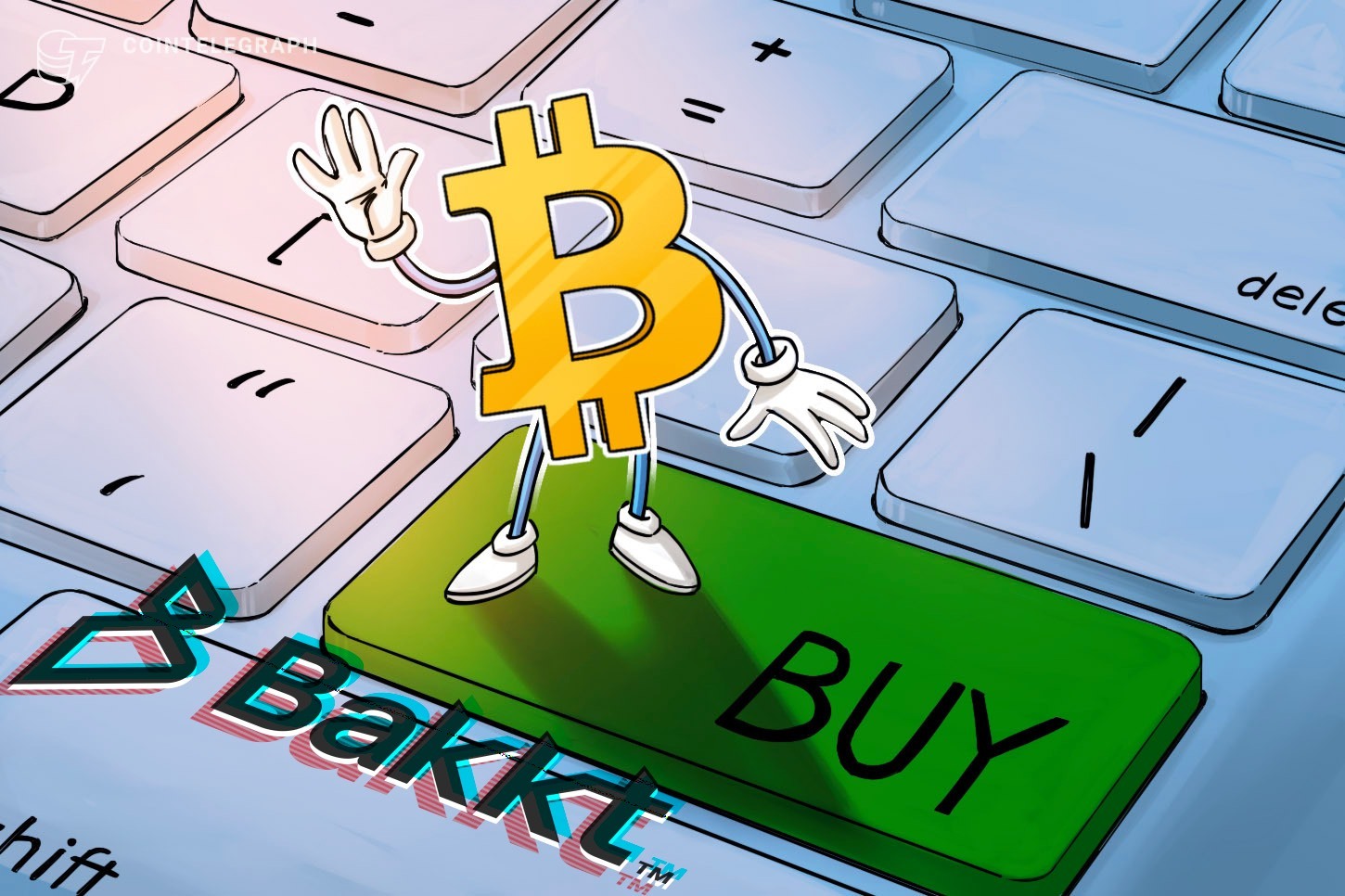

News broke on May 15 that Coinbase was the target of a $20 million extortion attempt after cybercriminals recruited overseas support agents to leak user data for social engineering scams.
While less than 1% of Coinbase’s active monthly users were reportedly affected, the expected remediation and reimbursement expenses range from $180 million to $400 million, as the exchange pledged to repay all phishing attack victims.
Despite the attack on the world’s third-largest cryptocurrency exchange, investor sentiment remains optimistic, with the Fear & Greed Index remaining firmly in the “Greed” zone above 69, according to CoinMarketCap data.

Adding to investor optimism, Coinbase saw over $1 billion worth of Bitcoin withdrawn on May 9, marking the highest net outflow recorded in 2025 so far, triggering analyst predictions of a supply-shock driven Bitcoin rally.
Coinbase faces $400 million bill after insider phishing attack
Coinbase was hit by a $20 million extortion attempt after cybercriminals recruited overseas support agents to leak user data, the company said on May 15.
Coinbase said a group of external actors bribed and coordinated with several customer support contractors to access internal systems and steal limited user account data.
“These insiders abused their access to customer support systems to steal the account data for a small subset of customers,” Coinbase said, adding that no passwords, private keys, funds or Coinbase Prime accounts were affected.
Less than 1% of Coinbase’s monthly transacting users’ data was affected by the attack, the company said.

After stealing the data, the attackers attempted to extort $20 million worth of Bitcoin (BTC) from Coinbase in exchange for not disclosing the breach. Coinbase refused the demand.
Instead, the company offered a $20 million reward for information leading to the arrest and conviction of those responsible for the scheme.
$1 billion Bitcoin exits Coinbase in a day as analysts warn of supply shock
Institutional demand for Bitcoin is growing, as Coinbase, the world’s third-largest cryptocurrency exchange, recorded its highest daily outflows of Bitcoin in 2025 on May 9.
On May 9, Coinbase saw 9,739 Bitcoin, worth more than $1 billion, withdrawn from the exchange, the highest net outflow recorded in 2025, according to Bitwise head of European research André Dragosch.
“Institutional appetite for Bitcoin is accelerating,” Dragosch added in a May 13 X post.
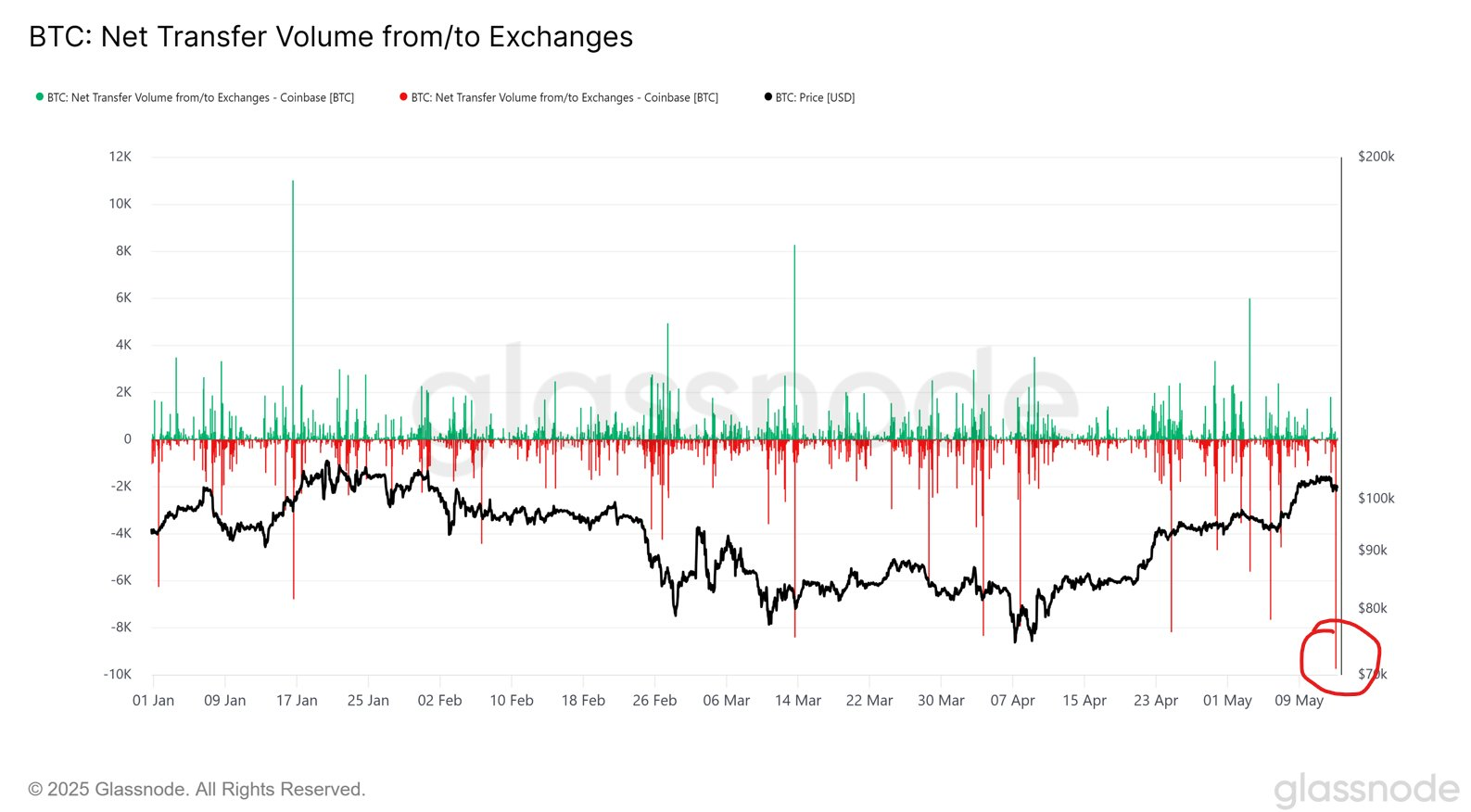
The outflow occurred as Bitcoin traded above $103,600 and just days after the White House announced a 90-day reduction in reciprocal tariffs between the US and China, easing market concerns and lifting broader investor sentiment.
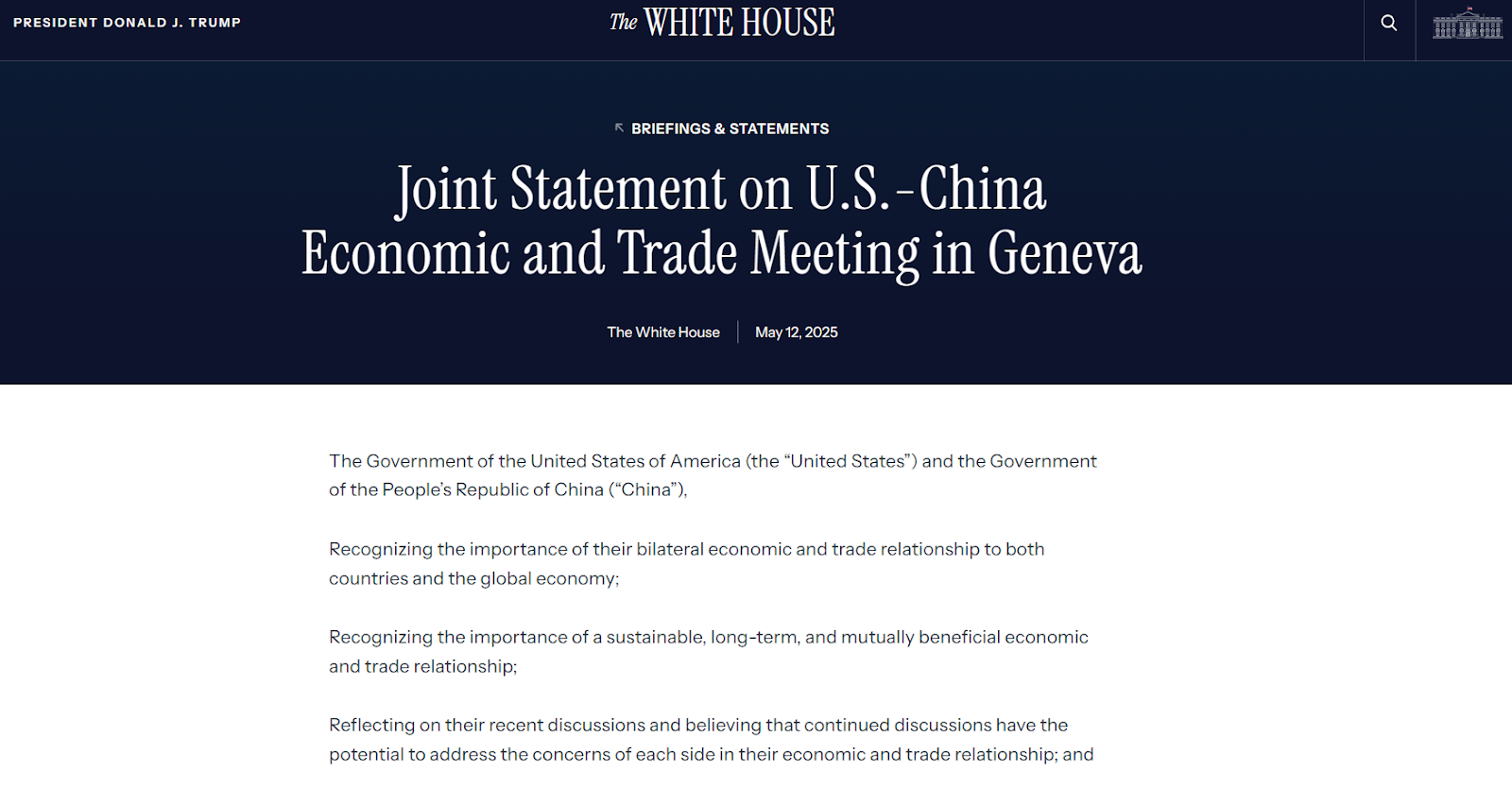
The 90-day suspension of additional tariffs removed the risk of “sudden re-escalation,” which may help Bitcoin, altcoins and the wider stock market rally due to improved risk appetite, Nansen’s principal research analyst, Aurelie Barthere, told Cointelegraph.
DeFi lender Aave reaches $40 billion in value locked onchain
Aave, a decentralized finance (DeFi) protocol, has reached a new record of funds onchain, according to data from DefiLlama.
In an X post, Aave said it topped $40.3 billion in total value locked (TVL) on May 12. Onchain data reveals that Aave v3, the latest version of the protocol, has about $40 billion in TVL.
Aave is a DeFi lending protocol that lets users borrow cryptocurrency by depositing other types of cryptocurrency as collateral. Meanwhile, lenders earn yield from borrowers.
“With these milestones, Aave is proving its dominance in the Lending Space,” DeFi analyst Jonaso said in a May 12 X post. TVL represents the total value of cryptocurrency deposited into a protocol’s smart contracts.

SEC delays Solana ETF as decisions for Polkadot, XRP loom
The US Securities and Exchange Commission (SEC) pushed back its decision on a proposed spot Solana exchange-traded fund (ETF), with the cryptocurrency industry now looking to the deadlines for the Polkadot and XRP-based ETFs in June.
The SEC delayed its decision on listing Grayscale’s spot Solana (SOL) Trust ETF on the New York Stock Exchange (NYSE) to October 2025, according to a May 13 filing by the securities regulator.
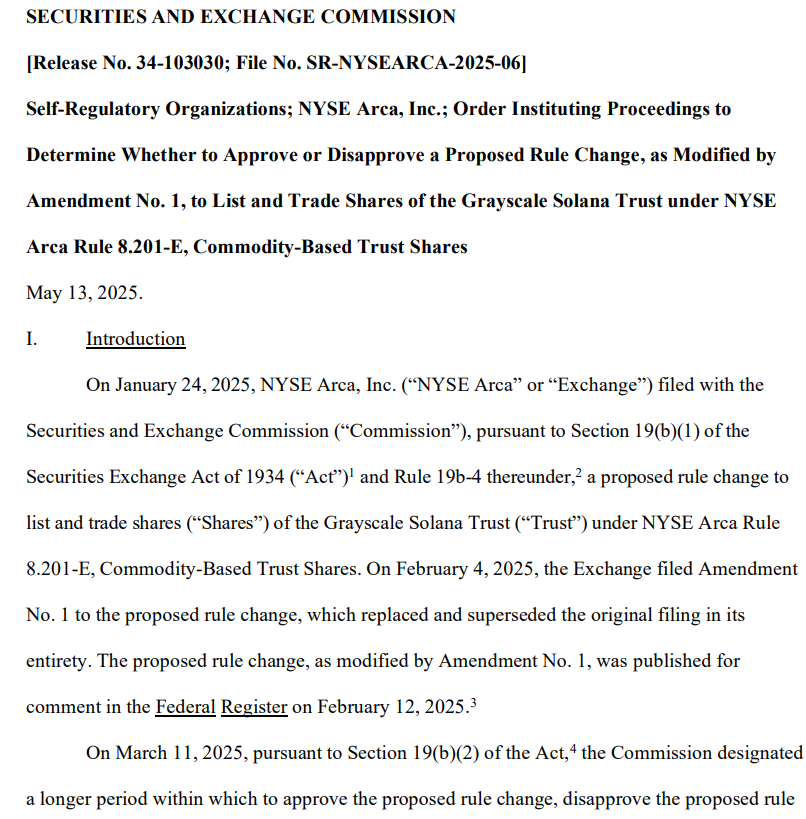
The decision came the week after the SEC delayed its ruling on Canary Capital’s Litecoin (LTC) ETF, Bloomberg Intelligence analyst James Seyffart wrote in a May 5 X post.
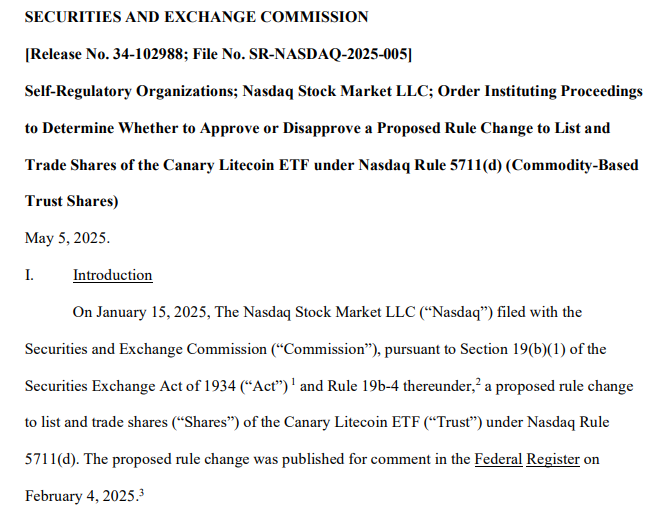
Spot ETFs are key drivers of liquidity and institutional adoption for digital assets. For Bitcoin, the US spot Bitcoin ETFs accounted for an estimated 75% of new investment after launching, which helped BTC recapture the $50,000 mark in February 2024, a month after the ETFs debuted for trading.
While a Solana ETF may generate only a fraction of the inflows of Bitcoin ETFs, it could increase Solana’s institutional adoption in the long term by offering investors a “regulated investment vehicle” that may still attract billions of dollars in capital, Ryan Lee, chief analyst at Bitget Research, told Cointelegraph.
Starknet hits “Stage 1” decentralization, tops ZK-rollups for value locked
Ethereum layer-2 scaling platform Starknet has reached a decentralization milestone laid out by Ethereum co-founder Vitalik Buterin and is now the largest zero-knowledge rollup-based network by total value locked.
Starknet said in a news release shared with Cointelegraph that it has hit “Stage 1” decentralization, according to a framework Buterin laid out in 2022, which means the network operates with limited oversight or “training wheels.”
Starknet added that the framework was the “gold standard onchain tool for analyzing Ethereum scaling solutions,” and said it achieved the milestone through changes such as creating a security council and censorship-avoidance mechanisms.
While the system still allows intervention from a security council, it has implemented a fully functional validity proof system governed by smart contracts.
Starknet is now the only layer-2 ZK-rollup network to have reached Stage 1 and has grown to be the largest ZK-rollup blockchain with a total value locked of $629 million, just ahead of ZKsync’s $610 million, according to L2beat.
Starknet is the fifth-largest layer-2 network by value locked, with the top four all Optimistic rollup-based, having reached Stage 1 decentralization using fraud proofs.
DeFi market overview
According to data from Cointelegraph Markets Pro and TradingView, most of the 100 largest cryptocurrencies by market capitalization ended the week in the green.
Solana-based memecoin Dogwifhat (WIF) rose over 43% as the week’s biggest gainer, followed by decentralized exchange Raydium’s (RAY) token, up nearly 19% over the past week.
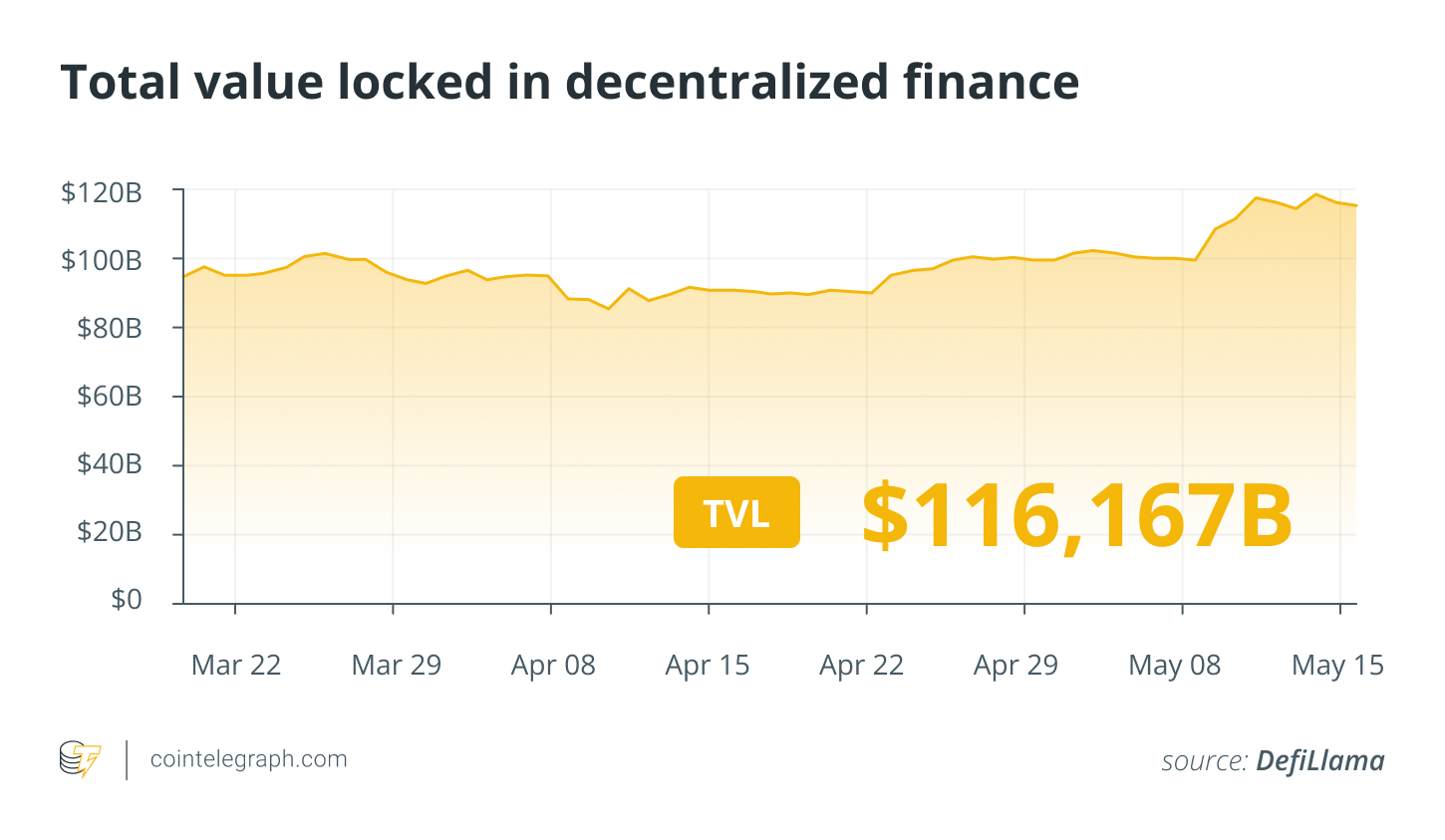
Thanks for reading our summary of this week’s most impactful DeFi developments. Join us next Friday for more stories, insights and education regarding this dynamically advancing space.

